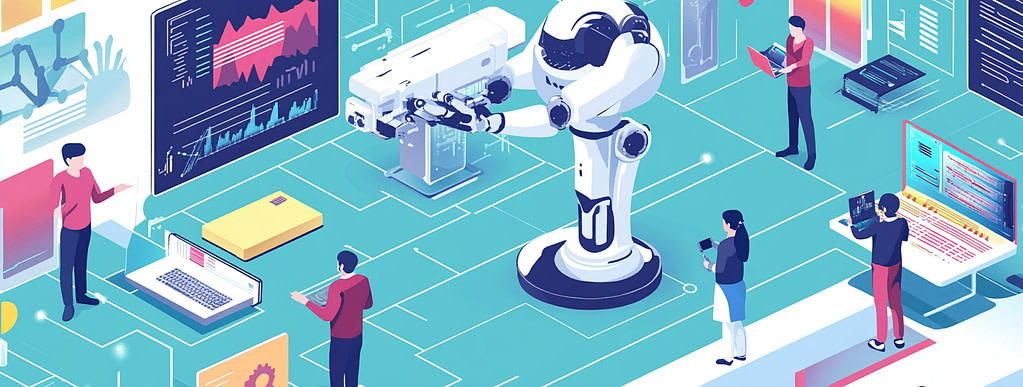Why RAG Outperforms Fine-Tuning for Keeping AI Models Current

Retrieval Augmented Generation (RAG) might just be one of the best friends of AI applications. It can be an excellent alternative to traditional methods like fine-tuning when it comes to updating the models themselves. We’ll discuss why RAG will be the best method when it comes to ensuring that AI models remain current compared to fine-tuning. Let’s begin.
The Basics of RAG and Fine-Tuning
RAG vs fine-tuning will be our comparison in this section. How do they differ from one another? Let’s break down each aspect part by part.
What is Fine-Tuning?
Fine-tuning is defined as a process where pre-trained models will perform better with certain tasks after they are adjusted accordingly. Yet, the adjustments will be done on a continuous basis so that it focuses on smaller, task-specific datasets. Even though it has some positives, its major negatives include limitations in both scalability and how it adapts to new data.
Understanding RAG
RAG will integrate retrieval mechanisms and turn them into a processor that uses unstructured data. This data in particular will be converted into vectors. Once converted, they will be used for augmenting the knowledge base of the model, albeit in real-time.
Why RAG Outperforms Fine-Tuning

RAG will be superior to fine-tuning in so many ways. This includes the following attributes:
- Flexibility
- Efficiency
- Quality of updates
We’ll explain these attributes in more detail. Let’s begin with flexibility.
Flexibility in Handling Unstructured Data
RAG will be more flexible when it comes to how it handles unstructured data. It can incorporate a large number of sources compared to fine-tuning. Since the world is more data-driven than years past, flexibility is one of the most critical attributes. The much-needed data will be unearthed from these unstructured formats by RAG.
Efficiency in Updating Models
RAG can ensure that AI model updates are much more efficient compared to fine-tuning. Specifically, the information provided by external resources will be used in order for the model to get regular updates. With fine-tuning, it will be more of a challenge since it will require constant retraining – both time-consuming and requires a large amount of computational resources.
Quality of Model Updates
The quality of updates will be much better if implemented by RAG. It’s done by leveraging any external knowledge sources, making it more relevant, accurate, and reliable – even in a fast-changing domain. Fine-tuning won’t even hold a candle to it.
Building an Effective RAG Pipeline
Implementing a RAG pipeline is key to harnessing its full potential for keeping AI models current. A well-designed RAG pipeline not only facilitates efficient data retrieval and integration but also ensures that the model’s updates are timely and relevant.
Key Components of a RAG Pipeline
An effective RAG pipeline consists of several critical components. These include a robust retrieval system capable of accessing diverse data sources, a mechanism for converting unstructured data into vector search indexes, and a process for integrating these indexes into the AI model’s knowledge base.
Ensuring that each component of the RAG pipeline is optimized for performance and scalability is essential for maximizing the benefits of this approach.
Challenges and Solutions
While RAG offers numerous advantages, implementing a RAG pipeline is not without its challenges. These can range from technical hurdles, such as building an efficient retrieval system, to data-related issues, like ensuring the quality of the unstructured data sources.
Overcoming these challenges requires a combination of technical expertise, careful planning, and ongoing monitoring. By addressing these issues proactively, organizations can build RAG pipelines that effectively keep their AI models current and accurate.
Enhancing RAG with Continuous Learning

One way to further improve the capabilities of RAG is by incorporating continuous learning mechanisms into the model update process. Continuous learning enables AI models to adapt in real-time to new information, trends, and user interactions, enhancing their performance and relevance over time.
By integrating continuous learning into the RAG pipeline, organizations can ensure that their AI models not only stay current but also evolve with changing requirements and preferences. This adaptive approach to model maintenance can lead to more personalized and effective AI solutions.
Benefits of Continuous Learning in RAG
The integration of continuous learning in RAG offers several benefits. Firstly, it allows AI models to capture and leverage evolving patterns in data, ensuring that they remain effective in dynamic environments. Secondly, continuous learning enables models to adapt to user feedback and preferences, improving their accuracy and user satisfaction.
Furthermore, continuous learning enhances the scalability of RAG by enabling models to incrementally update their knowledge base without the need for extensive retraining. This incremental learning approach not only saves computational resources but also ensures that models can quickly assimilate new information without disrupting their existing capabilities.
Conclusion
RAG represents a significant advancement in the field of AI, offering a more flexible, efficient, and high-quality alternative to fine-tuning for updating models. Its ability to handle unstructured data and provide targeted updates makes it particularly well-suited to the demands of modern AI applications. By investing in RAG pipelines, organizations can ensure that their AI models remain at the cutting edge, capable of delivering accurate and relevant results in an ever-changing world.